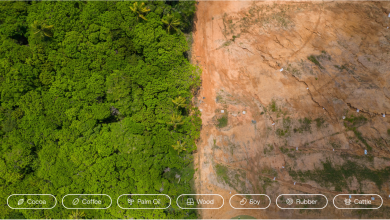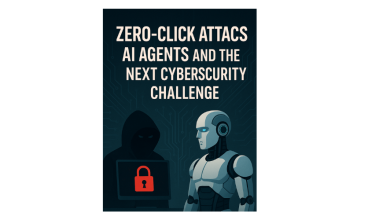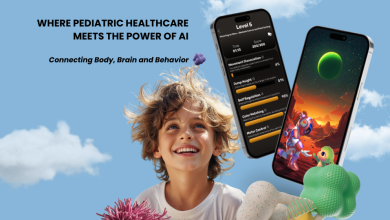The increasing number of AI industry trends in various global sectors has drastically changed how businesses approach automating routine tasks.
According to IBM, 42% of established companies have incorporated AI into their operations. However, 59% of startups plan to increase and speed up their investments in this technology.
AI has several advantages for modern businesses operating in the industry. From automating business and IT processes to improving customer service and tackling the talent shortage, the tech-driven landscape presents countless opportunities for economic expansion.
Businesses can use AI to improve resource efficiency, streamline operations, and gain insights into consumer behavior and market trends by utilizing machine learning algorithms, predictive analytics, and advanced automation. In this post, we’re exploring AI case studies in diverse industries, sharing impressive market stats.
-
Case Study In Healthcare: Google’s AI for Breast Cancer Detection
AI is transforming healthcare by speeding up drug discovery, enabling more precise and effective diagnoses, and customizing treatment regimens. Find this pertinent AI case study in healthcare industry:
Challenge: Google designed an AI model that was aimed at increasing the accuracy and efficiency of lesion identification in the early detection of breast cancer in mammograms. The system is supposed to scan images of mammograms for areas suspected of having cancer. AI allows it to learn from thousands of mammograms to recognize and understand patterns that are imperceptible to human eyes.
Impact: Importantly, it dramatically improved early detection of breast cancer, so cardinal in the treatment, and decreased the rate of false positives for mammograms.
The reduction in false positives minimized unnecessary biopsies and invasive procedures, which also relieved further patient stress and costs. The AI model also gave radiologists a second opinion, which improved their diagnoses.
Collaboration involving AI and healthcare improves the outcome for patients and increases efficiency.
Thanks to Brian Staggs, President of AC Grace Company
-
Case Study in Finance: JP Morgan Chase’s Contract Analysis
AI is revolutionizing trading, improving credit risk assessment, and improving fraud detection, all of which are changing the financial sector. AI-powered models can evaluate a variety of data points, such as social media activity, income, employment, and credit history, to determine a person’s creditworthiness.
Challenge: JPMorgan Chase was laboring under a manual review process of many legal documents, such as loan agreements and contracts—both lengthy and error-prone.
AI Implementation: JPMorgan built “COIN,” an AI system that, using machine learning, rapidly analyzes legal documents, identifies key clauses, and pinpoints risks in seconds. This game-changing AI solution automated all contract reviews for JPMorgan.
Impact: By automating the contract review process, it significantly reduced the time and resources needed for contract analysis. Quick decisions with much better efficiency now flow out quickly. COIN has fundamentally transformed the handling of contracts legally in JPMorgan Chase to make them faster and more accurate.
-
Case Study in Retail: Amazon’s AI Personalized Recommendations
Challenge: Amazon faced the challenge of providing personalized product recommendations to customers in order to enhance their shopping experience and increase sales.
AI Implementation: Amazon used some of the advanced AI algorithms in analyzing the customer’s information, such as purchase histories and browsing behavior. This also allows it to detect patterns in individualized product recommendations for its customers.
Impact: The AI approach has really transformed Amazon. Tailored recommendations help increase customer engagement and satisfaction, thus making the experience of shopping more enjoyable for customers. Customers find their favorite products easily, resulting in higher sales and revenue. This personalization results in increasing customer loyalty, as shoppers come back to Amazon to experience the same personalized experience.
Thanks to Aqsa Tabassam, Marketing Manager of The Monetery Company Inc.
-
Case Study in Manufacturing: Seimen’s Predictive Maintenance
Challenge: Siemens had to reduce costly equipment downtime in its manufacturing plants, which would result in delays in production and higher maintenance costs.
AI implementation: Siemens implemented AI-powered predictive maintenance solutions that helped analyze sensor data from industrial equipment for patterns and predict potential failures before they occur.
Impact: The impact of this AI-powered approach has been huge. Predicting equipment failures in advance has immensely reduced unplanned downtime for the company, and thus greater utilization of machinery with fewer resources. It also reduced maintenance costs considerably because the system helps identify when machinery needs maintenance, thereby avoiding unnecessarily done repairs.
The implementation of AI-based predictive maintenance led to an overall increase in plant efficiency, cost reductions, and workplace safety at Siemens.
Thansk to Matteo Valles, Owner of Vol Case
-
Case Study Transportation: Uber Ride Sharing Platform
Challenge: Uber needed to optimize its ride-sharing services by matching riders with drivers in the most efficient manner and minimizing wait times.
AI Implementation: To address this challenge, Uber implemented an AI model to improve dynamic pricing, surge cost, and real-time route optimization. These AI solutions enable Uber to better match riders with nearby drivers and adjust pricing according to demand and traffic conditions, thereby improving the overall efficiency of the platform.
Impact: Such AI-driven solutions make an immense impact. Riders experience minimal wait times due to the system’s ability to quickly match them with drivers and dispatch vehicles using optimized routes. This also increases drivers’ earnings as the platform can make dynamic pricing in real-time, mostly in times of demand.
Furthermore, the real-time route optimization ensures traffic flows by guiding drivers through the most efficient routes possible. This resulted in decreased congestion in busy areas. Overall, using AI, Uber has transformed its ride-sharing platform into a more reliable, faster, and cost-effective option for riders and drivers alike, benefitting users in smoother urban transportation.
-
Case Study Automobile: “Toyota: Unsafe at Any Speed”
Challenge: Toyota has long been committed to ensuring that its car designs are not only aesthetically pleasing but also safe and reliable.
AI Implementation: To meet this aim, the Toyota Research Institute developed advanced AI tools in efforts to improve the design process so that its cars will function appropriately in real life. Designers can provide the AI system with sketches and specific design requests, such as sleek or SUV-like features, and the AI refines these ideas to meet both aesthetic and engineering requirements.
Impact: The results were impressive. The AI system reduced iterations to reconcile design with engineering constraints, resulting in a faster design process. By incorporating aerodynamics knowledge, Toyota has built electric vehicles with longer range and efficiency.
Through traditional engineering skills combined with innovative AI capabilities, Toyota enhanced its ability to manufacture cars that are safer, more efficient, and more innovative.
Thanks to Craig Cambell, Founder of Auto Parts Guideline
Level-Up Your AI Game!
AI heralds a paradigm shift in virtually all sectors, opening the doors to an era of business growth opportunities. It ranges from healthcare to finance, logistics to manufacturing; AI has become the linchpin of innovation, process optimization, and standards redefinition.




